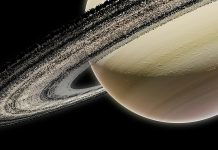
Scientists have long assumed that stars and the disks of gas and dust that form planets around them start out spinning in the same direction.
After all, our own solar system is fairly well aligned—our planets orbit in the same general direction as the Sun spins, with just a slight six-degree tilt between the two.
But a new study suggests this neat alignment isn’t the universal rule we once thought it was.
In research led by scientists from UC Santa Barbara, the University of Texas at Austin, Yale University, and National Taiwan Normal University, astronomers discovered that a significant number of young stars are born misaligned with their planet-forming disks.
This finding, published in Nature, challenges long-standing assumptions about how solar systems take shape.
“All young stars form with surrounding disks, but until now, we didn’t know much about how those disks line up with the stars’ spin axes,” said Professor Brendan Bowler, a senior author of the study.
“Our own solar system led us to believe that alignment was the norm.”
To find out what’s really happening in deep space, the team studied 49 young, isolated stars using data from several powerful space and ground-based telescopes.
These included the Atacama Large Millimeter/submillimeter Array (ALMA) in Chile, NASA’s Transiting Exoplanet Survey Satellite (TESS), and the Kepler Mission’s K2 extension. The goal was to measure the tilt—or “obliquity”—between each star’s spin axis and the plane of its protoplanetary disk.
The results were surprising. While around two-thirds of the stars were well-aligned with their disks, the remaining third were not. This means that about one in every three of these young stars began life tilted, with their disks spinning at a different angle from the stars themselves.
“This is a big deal,” said Lauren Biddle, lead author and postdoctoral researcher at UT Austin. “It suggests that some solar systems are born misaligned, rather than getting that way through later gravitational chaos.”
For years, scientists believed that tilted planetary orbits—like those seen in many exoplanet systems—were caused by interactions long after the planets formed.
These could include gravitational pushes from nearby stars or other planets in the same system. But this study shows that some of those tilts may be built in from the very beginning.
That’s not to say complex gravitational interactions don’t happen. In many cases, they still likely play a role. But this new evidence introduces a simpler explanation for at least some misalignments: some stars and their future planets are simply born out of sync.
It also reframes how we view our own solar system’s slight tilt. “It turns out our Sun may not be so special after all,” said Bowler. “It likely fits right into this broader pattern of stellar tilts.”
The next step for researchers is to figure out what causes this misalignment in the first place. What happens during the earliest stages of star formation that causes a third of these systems to come out tilted? That’s a mystery still waiting to be solved.
Source: UC Santa Barbara.



